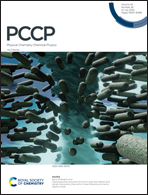Highly efficient blue quantum-dot light-emitting diodes based on a mixed composite of a carbazole donor and a triazine acceptor as the hole transport layer
Abstract
Solution-processed thermally activated delayed fluorescence (TADF) exciplexes were employed as the hole transport layer (HTL) of blue quantum dot (QD) light-emitting diodes (QLEDs) by blending polymer donors of poly(N-vinylcarbazole) (PVK) with small molecular acceptors of 2,4,6-tris(biphenyl-3-yl)-1,3,5-triazine (T2T). As a result, the PVK:T2T HTL can harvest holes and electrons leaking from the QD active layer to form exciplex excitons and then this harvested exciton energy can be effectively transferred to the adjacent QD emitters through the Förster resonance energy-transfer process. Furthermore, the TADF exciplexes can enhance the hole mobility of the HTL due to the charge transfer process from the PVK donor to the T2T acceptor under an external electric field. The maximum current efficiency (CE) and external quantum efficiency (EQE) of the fabricated blue ZnCdS/ZnS core/shell QLEDs increase from 4.14 cd A−1 and 7.33% for the PVK HTL to 7.73 cd A−1 and 13.66% for the PVK:(5 wt%)T2T HTL, respectively. Our results demonstrate that the TADF exciplex HTL would be a facile strategy to design high-performance blue QLEDs.



 Please wait while we load your content...
Please wait while we load your content...